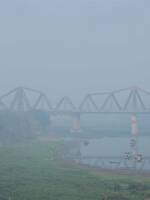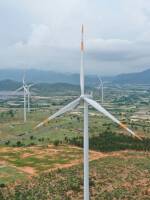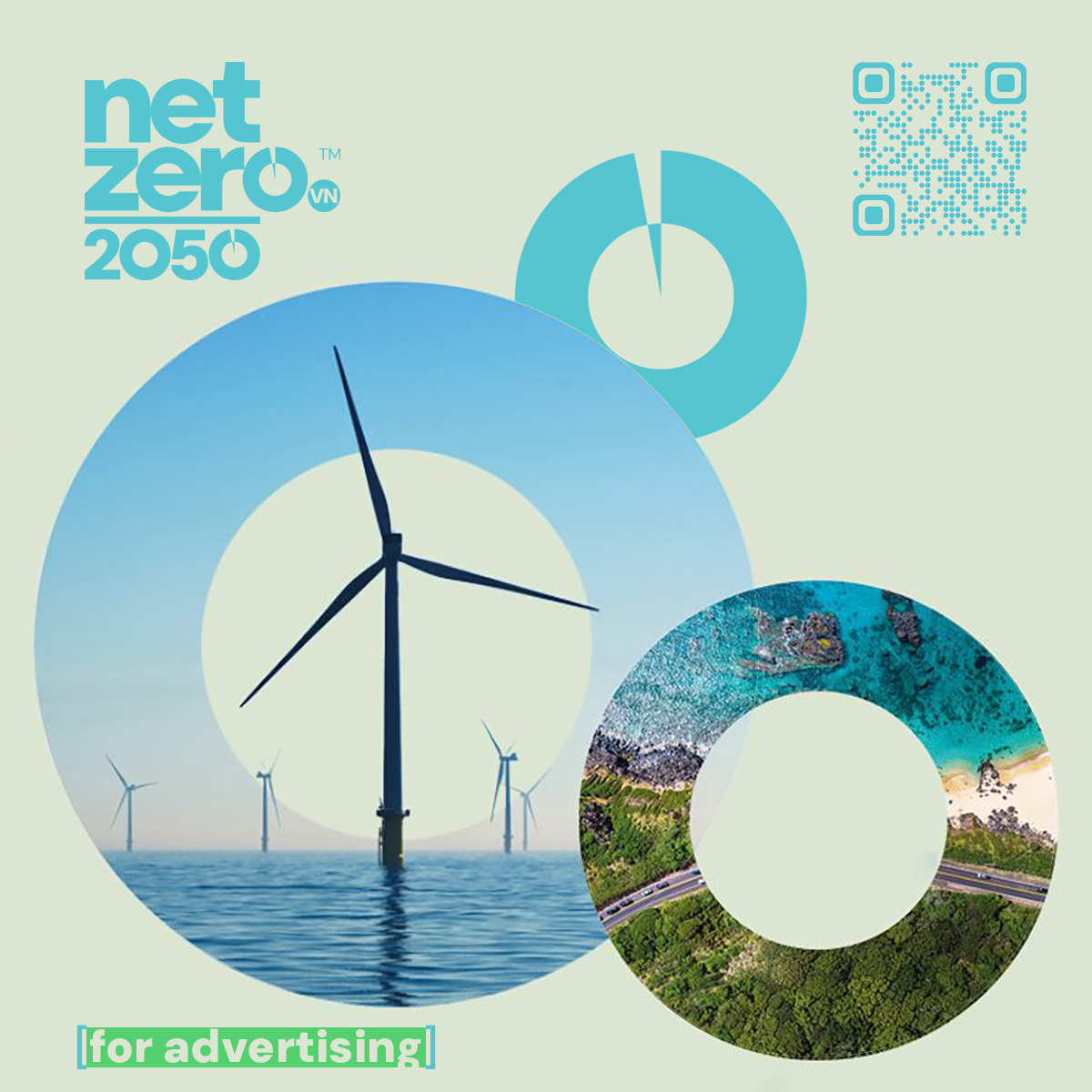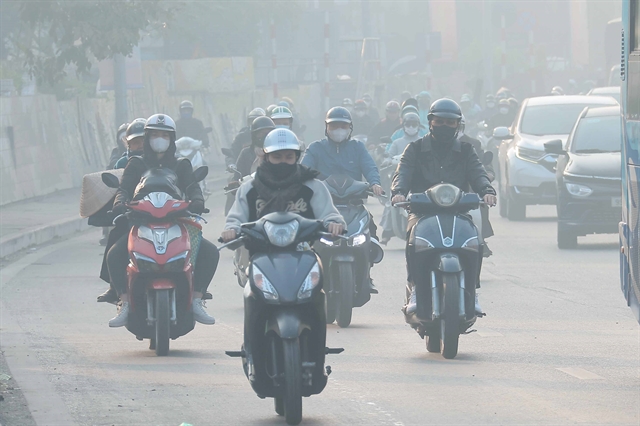
Hà Nội, the capital of Việt Nam, recently ranked 7th among 121 global capitals surveyed for average annual PM2.5 concentrations in 2024, is urgently looking for solutions to address the increasingly severe air pollution plaguing the capital.
Trần Sỹ Thanh, Chairman of the capital People’s Committee, said Hà Nội is a special urban area, playing a central role in the nation’s economy, culture, science and national security.
It is also one of the country’s largest cities in terms of both area and population.
Along with rapid urbanisation, particularly in the inner city, Hà Nội has experienced a significant rise in mechanical population growth.
Moreover, as the heart of the Hồng (Red) River Delta region, it is home to the nation’s fastest-growing economic zone.
Given the unique context, Hà Nội continually faces numerous environmental challenges, including air pollution, waste management overloads and wastewater treatment issues.
“As such, environmental protection in the capital has always been a priority, with the Government and city leaders placing it at the forefront of the agenda,” he said.
The commitment is evident in various key Government and city documents, which have been actively implemented in recent years.
Most recently, three important documents were adopted: the revised Capital Law of 2024 and two newly approved master plans for Hà Nội.
The revised Capital Law specifically outlined several tasks to establish low-emission zones.
In the master plans, environmental concerns are prioritised as urgent tasks to be addressed from 2025 to 2030.
In line with these efforts, Hà Nội is implementing a series of measures to improve the urban environment.
The city is tackling air pollution by reducing the use of private vehicles, increasing investment in public transport, transitioning to green traffic systems, eliminating the use of coal stoves, enhancing street cleaning, and monitoring construction site sanitation.
The city is also addressing wastewater issues and cleaning the city’s rivers, including urgent efforts to replenish water in the Tô Lịch River, with a goal to complete the task by September, as instructed by Party General Secretary Tô Lâm.
The capital is modernising waste collection services, with a pilot project to separate waste at source in five inner-city districts.
“However, despite the efforts, the quality of the environment in Hà Nội has yet to meet expectations, particularly in terms of air quality,” Thanh added.
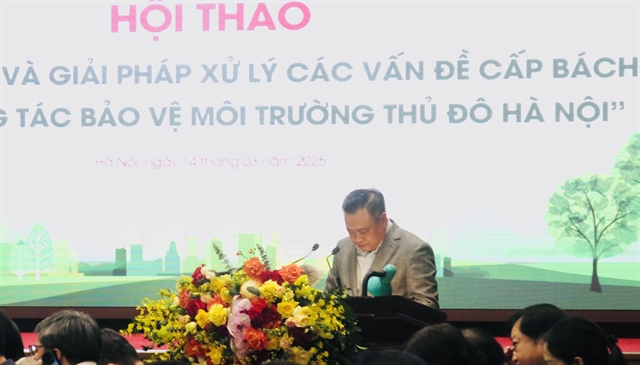
Therefore, Hà Nội is seeking collaboration and support from experts, scientists, organisations, businesses and the local community to address the challenge.
Thanh made the call at a conference co-held last Friday by the capital People’s Committee and the Việt Nam Academy of Science and Technology to seek solutions for pressing environment issues in the city.
Professor Châu Văn Minh, President of the Việt Nam Academy of Science and Technology, said that like many large cities around the world, Hà Nội faces significant environmental issues such as air pollution, water contamination, waste and solid waste management.
The issues not only affect the quality of life and public health but also threaten Hà Nội’s attractiveness for investment and its sustainable development.
“Thus, addressing Hà Nội’s environmental challenges must be a top priority, and effective solutions must be found quickly,” he added.
Professor Minh further emphasised the growing importance of science and technology in managing and protecting the environment.
Globally, many cities have successfully applied technological solutions to improve environmental quality, such as automated air quality monitoring systems, advanced wastewater treatment technologies, circular economy models for waste management, and artificial intelligence (AI) in environmental monitoring and forecasting.
The academy has launched several research projects on air quality monitoring and simulation, offering early warnings and pollution control solutions.
The academy stands ready to assist Hà Nội in research, technology transfer and the application of scientific solutions to address the city’s pressing environmental issues, he said.
Why are efforts falling short?
Hoàng Dương Tùng, Chairman of the Việt Nam Clean Air Network, said that although Hà Nội has made considerable strides in combating air pollution, the results have not yet met expectations.
“Why, despite all our efforts, are we still not seeing the desired results?” he asked.
In his view, there are several reasons for this.
First, he believes that awareness of air pollution and the commitment to addressing it remains limited in certain localities, particularly in districts, communes and smaller urban areas.
The issue is often only raised at the city level, and while the Government frequently discusses environmental matters, the responsibility for tackling air pollution is often placed solely on the specialised environmental agency – the city’s Department of Natural Resources and Environment.
This, according to Tùng, is concerning.
Many authorities at the district and commune levels do not fully understand their responsibilities in fighting air pollution.
Secondly, Tùng pointed out that there is a lack of comprehensive solutions.
“We need to improve our approaches,” he said.
Thirdly, he highlighted the importance of developing high-quality policies and plans aimed at reducing air pollution.
Industrial facilities in Hà Nội, he noted, do not yet have comprehensive emission inventories, which are crucial for evaluating sources of pollution.
Tùng stressed that the city suffers from a shortage of environmental management expertise, particularly with regard to air quality.
“Currently, there is no air quality management office within the department and there is insufficient collaboration with universities and research institutions that could provide valuable support about the issue,” he added.
Lastly, he identified a lack of coordination between Hà Nội and neighbouring provinces, noting that air pollution is a regional issue that cannot be tackled in isolation.
“We must solve this problem in a coordinated way, not as separate efforts,” Tùng said.
The timing is right
Tùng also added: “The opportunities to address air pollution in Hà Nội have now reached a critical point, with several factors converging recently.”
First and foremost, there is the political will at the highest levels of both the Party and Government, as well as from the Hà Nội city authorities. Party General Secretary Tô Lâm has repeatedly emphasised the need to decisively tackle Hà Nội’s air pollution.
Significant changes have been observed in recent months, such as the ban on 16-seat vehicles in the Old Quarter, which has already been implemented.
Secondly, the new Capital Law, with its unique provisions for Hà Nội, represents a major opportunity.
Additionally, the city’s master plans have been approved, further reinforcing the path forward.
Thirdly, Hà Nội boasts a large and dedicated group of experts and scientists, which is another positive factor in the fight against air pollution.
Importantly, many businesses are now actively participating. A prime example is Vingroup’s successful deployment of green buses, a step towards a cleaner urban transport system.
There is a high level of public awareness and consensus among the residents of Hà Nội regarding the need to combat air pollution.
“This provides a strong foundation for further action,” he said.
Lastly, valuable lessons have been learnt from other capitals around the world, such as Beijing in China and Bangkok in Thailand.
“In short, we have many opportunities and favourable conditions to address air pollution,” he said.
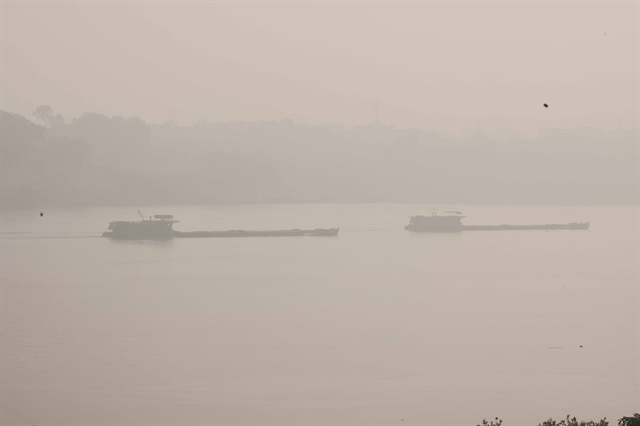
Proposed solutions
Tùng further emphasised that improving Hà Nội’s air quality should be a top priority in the city’s socio-economic development policy over the coming years.
He recommended incorporating air quality targets into the city’s five-year economic development plans.
There must be clear responsibilities for air quality at all levels of Government, from the city down to districts, communes and wards.
“Each locality should have specific air pollution reduction targets, with designated accountability, clear timelines and measurable results,” he added.
It needs specific data to inventory emissions and, from this, develop plans to reduce air pollution.
A dedicated office within the Department of Natural Resources and Environment is essential for managing air quality.
He also urged the city to leverage the expertise of scientists and researchers from Hà Nội’s universities.
“As I know, the team of experts from China’s Tsinghua University has been deeply involved in air quality management in Beijing, and this has yielded significant results,” he added.
Furthermore, he suggested that penalties for air pollution violations should be progressively increased day by day, with fines growing larger the longer the issue is unresolved, thereby incentivising pollution sources to adjust their practices voluntarily.
Another key measure is to limit the number of new petrol and diesel vehicles in the city.
In Beijing, for example, a quota system restricts the number of new petrol and diesel cars and motorbikes each year, while encouraging a shift towards electric vehicles.
Lessons learned
Zbigniew Klimont, Head of Pollution Management Research Group at International Institution of Applied Systems Analysis (IIASA)’s Energy, Climate and Environment Programme stressed the importance of recognising that pollution knows no boundaries – whether it concerns air, water, or soil.
He highlighted the critical need for collaboration between urban centres and neighbouring regions in addressing pollution.
“The future of the blue sky every day in Hà Nội needs true collaboration of Hà Nội with neighbouring provinces and across many stakeholders,” he said, adding “I think recognition and the importance of the high political level of this issue and the way forward is absolutely essential, as has been also demonstrated in Beijing.”
Klimont also noted that Beijing’s battle against air pollution has succeeded due to strong support from central and local governments. Substantial investments in time, resources, and politics have been made.
The city reformed its air quality laws and expanded its air quality monitoring network from just 35 stations in 2013 to over 1,000 stations today.
Between 2013 and 2017, PM2.5 concentrations in Beijing dropped by 35 per cent, while the greater Beijing-Tianjin-Hebei region saw a 25 per cent reduction.
Key policies implemented in Beijing included reducing coal consumption, closing outdated, polluting factories and strictly enforcing emission limits.
The city also invested in green transport, phasing out old, high-emission vehicles.
Professor Kiwao Kadokami, from the Faculty of Chemical and Environmental Engineering at the University of Kitakyushu, Japan, also shared experiences in urban environmental management in Kitakyushu, a city that faced severe air pollution in the 1960s due to rapid economic development and the widespread use of coal.
The city’s pollution control measures not only include treating emissions at the point of discharge but also focus on improving production processes by introducing cleaner technologies.
He said that the approach helps improve the environment and provide economic benefits through increased productivity.
The local administration also implemented effective responses in collaboration with businesses, including the signing of “Pollution Prevention Agreements” with companies to supplement existing legal regulations.
As a result, after 15 years, the city’s skies had returned to their pre-pollution state.
He concluded that the cooperation between citizens, businesses, local authorities and scientists is key to solving environmental problems.
Nguyễn Hằng (VNS)


